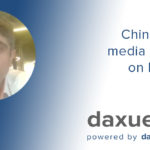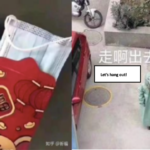The ultimate guide to marketing on leading digital platforms in China | Daxue Consulting
The incredible popularity of instant messaging and online shopping in China, coupled with smartphone adoption, has greatly helped in making China become the largest social network and e-commerce market. As of 2018, it is estimated that the total social network users and digital buyers in China will reach 616.5 million and 800 million respectively. Under this trend, there is a growing interest from foreign businessmen in taking advantage of opportunities in China’s digital market. In this article, we are going to provide you with a direct view on the leading social network and e-commerce sites in China, and brief you on their operational facts, their advertising channels that are open to foreign companies, the related costs, the user demographics, and step-by-step tutorials on platform entry, etc. And hopefully, this will help you in making business decisions with regard to promoting your products and services to Chinese consumers.
1. The Social Network Behemoths in China

Logo WeChat
Why WeChat?
WeChat was initially released in 2011 under the name of “Weixin”, developed by Tencent Group, it was later rebranded and marketed as WeChat in 2012 to attract international audiences. By the first quarter of 2018, WeChat had 1040 million monthly active users in total. It is one of the largest global social networks, placing fifth in a number of total active accounts. Popular app features on WeChat include voice messaging, moments, scan, games, and mini-programs. It is statistically reported that 61% of WeChat users access moments every time they use the app, hence making WeChat a great platform for foreign companies to launch moments ads for both branding and sales conversion purposes. In addition, foreign businesses of an automobile, consumer electronics and gaming genres are encouraged to launch commercial activities on WeChat in particular since 67.5% of WeChat’s active users are male.
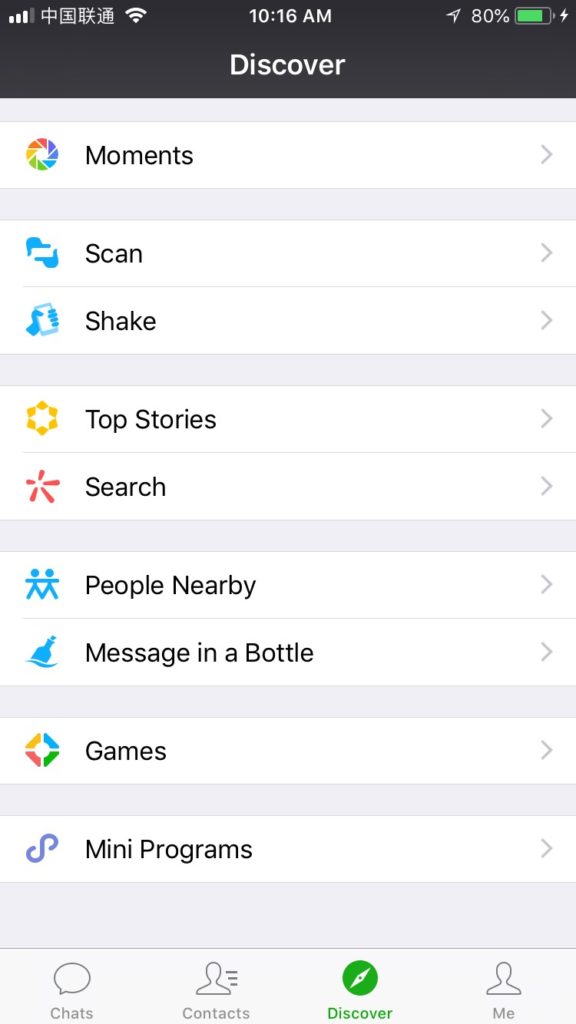
Wechat discover
What exactly is WeChat advertising, and how does it work?
Below is a classic example of an ad launched by a foreign B2C brand on WeChat. Potential consumers can complete the purchase in a 6-step process entirely within the app.
 |
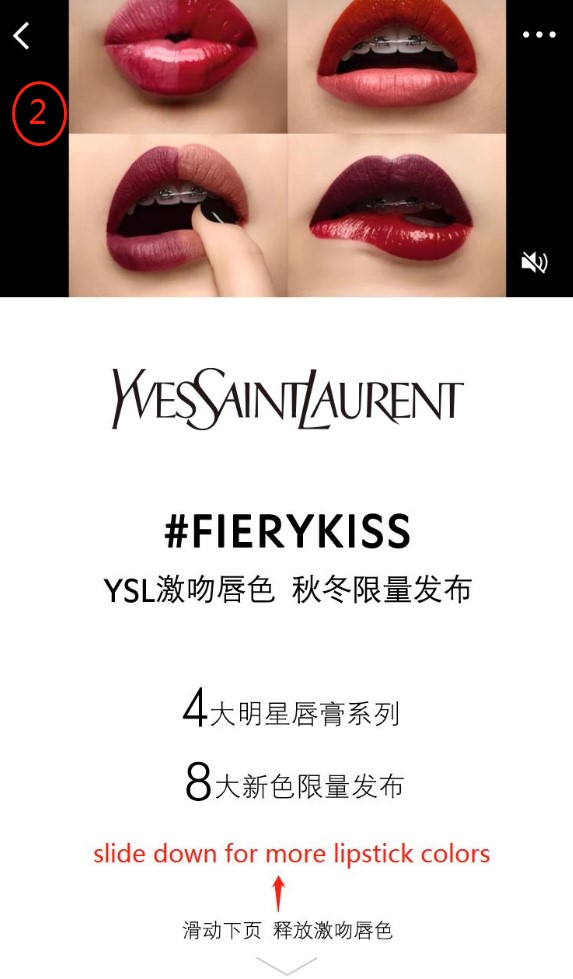 |
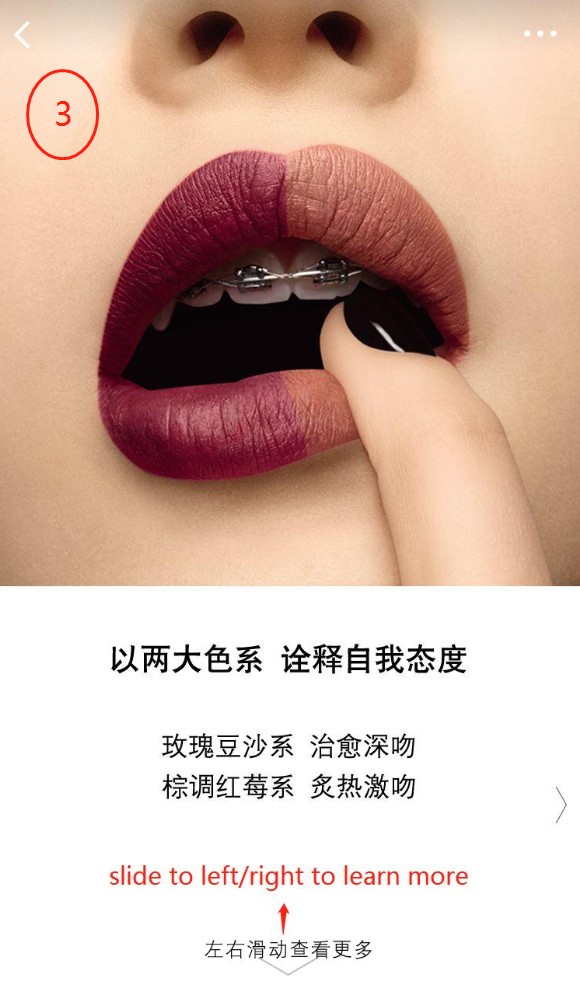 |
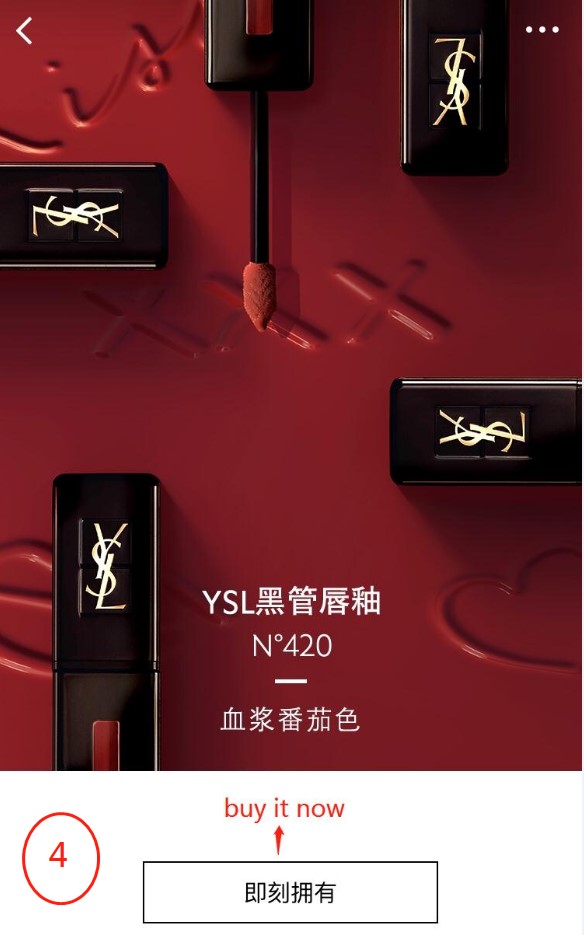 |
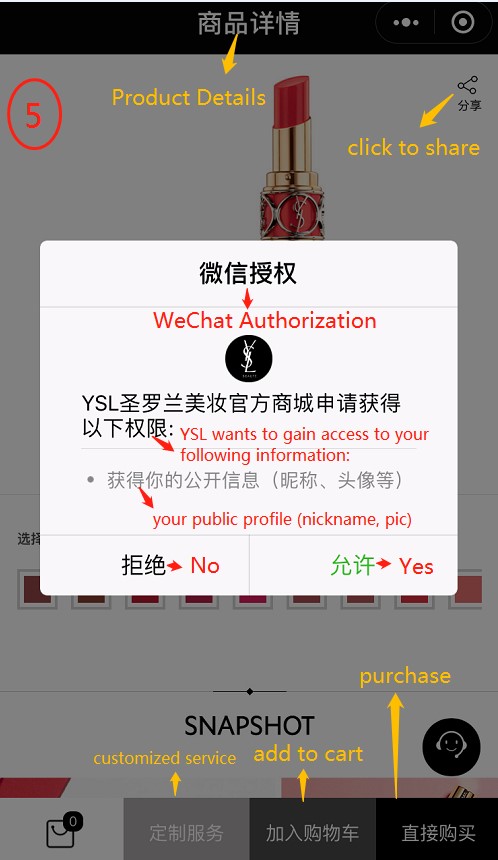 |
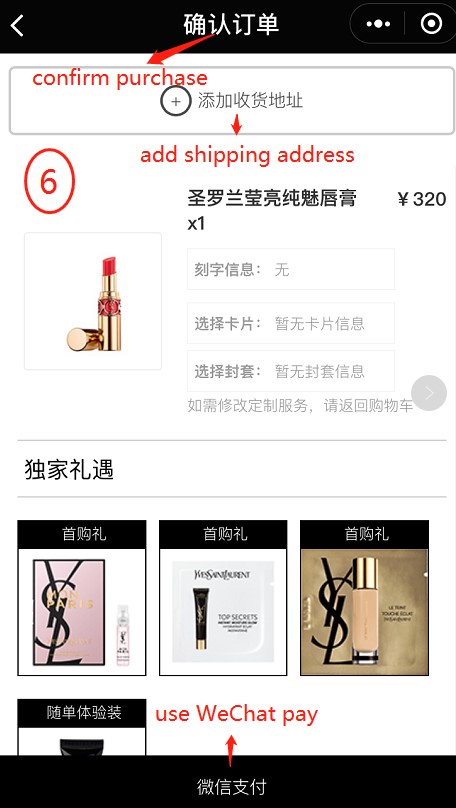 |
Advertisements on WeChat are typically displayed either through promotional messages on individual user’s moments timeline or at the bottom of official account’s published articles. WeChat advertising can be categorized into four major groups: moments advertising (which is pretty much the equivalent of ads we see day-to-day on Facebook timeline feed), banner advertising (they are usually featured at the bottom of a message written by a WeChat official account), KOL advertising (involves mutual collaboration with influencers/bloggers to push conversion), and mini-program advertising (released on Sept. 5, 2017, which makes it the newest WeChat promotion channel).
Moments Ads
In general, moments advertising in WeChat can be seen in two formats: picture display ads and video ads. And a typical moments ad comprises the following contents:
- The advertiser’s brand name along with a profile picture
- No more than 6 pics or 6-15 seconds short video
- The description of the ad, up to 40 characters
- A link to html5 page for further action

Foreign advertisers can target audiences based on their location, age, gender, interest, etc. A single user can see up to one moments ad every 48 hours, and the ad disappears within 6 hours if the user didn’t act on this ad (like comment or click on the link). If actions are put upon the ad from the user, WeChat will increase the likelihood of the user’s friends receiving the same ad on their moments timeline, thus creating a viral effect for the advertiser.
Banner Ads
Banner advertisements on WeChat official account usually come in two formats: standard banner ads & KOL banner version ads. The first one was launched in 2014, and the latter one in October 2016. The KOL mutual ads are much pricier compared with the standard version, and payment is usually based on the results.
KOL Ads
KOL ads, also known as key opinion leader ads, are an integral part of WeChat advertising. It was launched in 2016 and quickly recognized as an efficient way to target audiences through influencers. It is important to keep in mind that Weibo KOLs are generally more efficient in pushing e-commerce conversion than WeChat KOLs since they are able to link directly to e-commerce sites like Tmall/Taobao, while within WeChat, users had to go through multiple processes before completing a purchase.
Mini-Program Ads
WeChat launched mini-programs in January 2017, and it quickly went viral by the end of the year. Typically, a mini-program takes up less than 10 megabytes within WeChat, making it fast to run. At the beginning of 2018, Tencent indicated that over one million mini-programs have been created on WeChat with 500 million active users interacting with at least one program per month. And this phenomenal user base has greatly spiked many foreign brands’ interests. In July 2018, Google successfully launched its own mini- program called “猜画小歌“ a.k.a. “Guess the Sketch” on WeChat. ” The advertisements are limited within the mini-program page, and companies can choose to put their message either on top or at the bottom of the banner. WeChat supports a variety of mini-program categories, including games, tools, stores. Advertisements can only be displayed in picture & text format with external H5 link. Many advertisers choose to integrate mini-programs into moments ad to increase brand awareness.
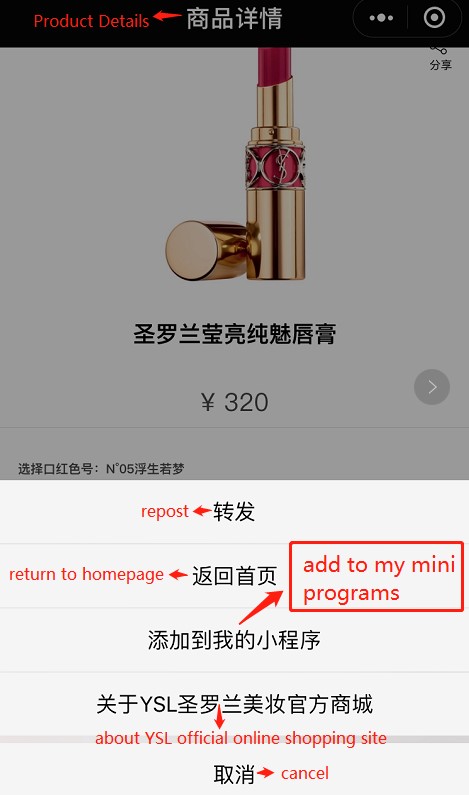
YSL attempting to drive users to add its mini-program when purchasing a product.
Can foreign companies advertise on WeChat? And what are the regulations?
For moments advertising and KOL advertising, both companies registered in mainland China (including wholly foreign-owned enterprises a.k.a. WFOE) and overseas companies can purchase them. Banner ads are mostly restricted to Chinese companies, for foreign advertisers who are seeking to leverage banners ads as their marketing channel, you will be required to prove that:
- You have a registered company in mainland China
- You have all the licenses to justify that you can advertise in the specific industry that your ads are associated with. For example, if you want to advertise athletic wear, you will need to provide all the license paperwork granting you the rights to sell athletic wear in China.
| WeChat Ad Types | Open to Foreign Companies? | ||
| Yes! | Yes but subject to strict approval | No | |
| Moments Ads | ✔ | ||
| Banner Ads | ✔ | ||
| KOL Ads | ✔ | ||
| Mini-Program Ads | ✔ | ||
WeChat has issued a series of regulations in terms of advertising audit. Typical industries involved include: b2c e-commerce, gaming, automotive, food, agriculture & aquaculture, we-media, alcohol, educational training, finance, real estate, and cosmetics. The rules and requirements applied to a specific industry can be found on WeChat official website.
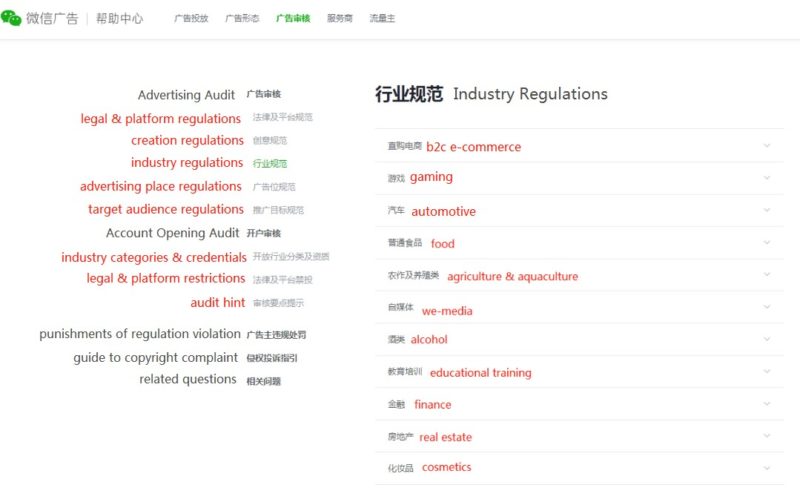
Wechat advertising regulations
Companies can pick the specific industry, advertising channels, and promotion objective to get detailed information about advertising restrictions. Here is what the page looks like:
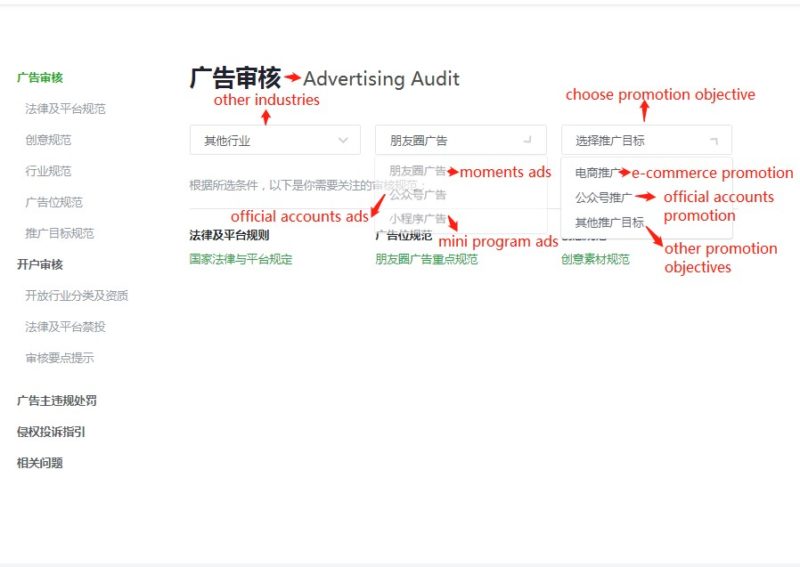
Wechat advertising audit
Here is an example picture of the legal & platform regulations page on WeChat website:
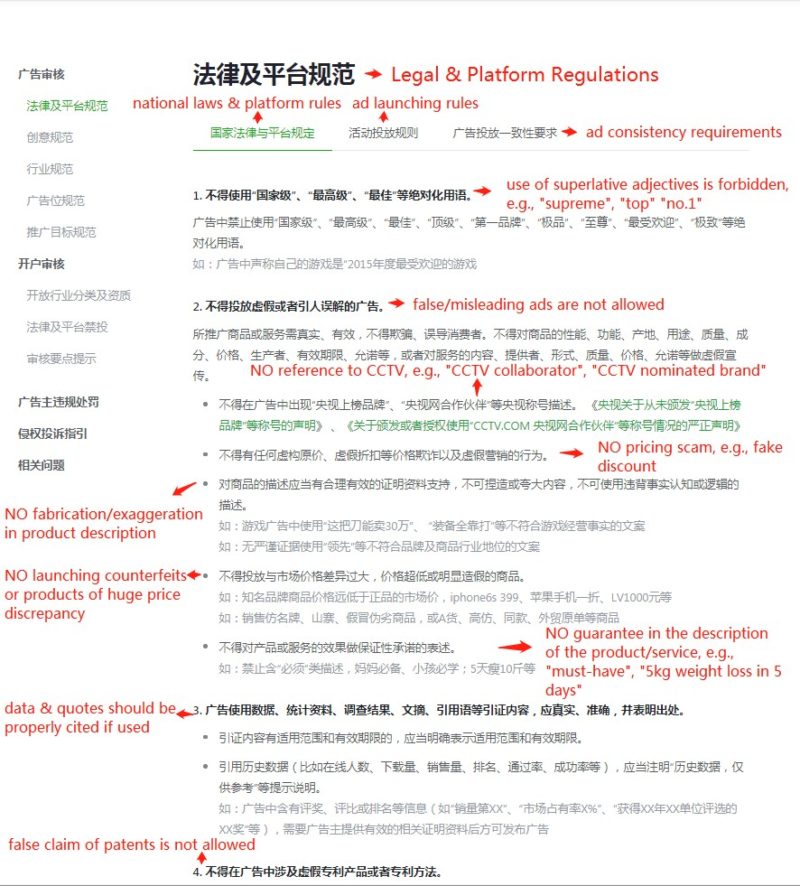
Wechat advertising regulations
How much does it cost to advertise on WeChat?
Moments Ads
As of 2018, the WeChat moments ads use the CPM pricing model through two schemes: scheduled pricing scheme and bidding scheme. Companies looking for flexible advertising times usually opt for bidding scheme, and the minimum cost per day is $160. For scheduling scheme, advertisers can set a fixed time for the next 2-28 days. And the pricing of schedule scheme mostly depends on the advertisement’s launching area, which are categorized into three groups: core cities, large cities, and other cities. For example, the charge for per thousand impressions in a core city like Shanghai is ¥150/$21.8 for picture display ads.
| Core Cities (2) | Large Cities (20) | Other Cities |
| Beijing
Shanghai |
Guangzhou, Chengdu, Shenzhen, Hangzhou, Wuhan,
Suzhou, Chongqing, Nanjing, Tianjin, Xi’an, Shenyang, Changsha, Qingdao, Ningbo, Zhengzhou, Dalian, Xiamen, Jinan, Harbin, Fuzhou |
… |
| City Size | CPM of Picture Display Ads | CPM of Video Ads |
| Core Cities | ¥150/$21.8 | ¥180/$26.19 |
| Large Cities | ¥100/$14.55 | ¥120/$17.46 |
| Other Cities | ¥50/$7.28 | ¥60/$8.73 |
For foreign advertisers targeting Chinese tourists, WeChat moments ad charges ¥150/$21.8 per CPM for picture display ads and ¥180/$26.19 per CPM for video ads. Here are some details:
| Minimum Entry Cost | Countries & Regions |
| ¥50,000/$7,275 | HK, Macau, Taiwan, Japan, Korea, Malaysia, Singapore, Thailand, United States, Australia |
| ¥10,000/$1,455 | Germany, France, England, Italy, Canada, New Zealand |
In general, there are three pricing levels for WeChat moments ad, and the features that come with each pricing level can be seen from the table below:
| Moments Ad’s Pricing Level | Display Contents | |
| Pictures?/ How many? | Videos?/How long? | |
| ¥50,000/$7,275 | Yes/only 1 | No |
| ¥1,000,000/$14,551 | Yes/1, 3, or 4 | Yes/ 300″, or 6″ for external link |
| ¥5,000,000/$72,755 | Yes/1, 3, 4, or 6 | Yes/ 300″, or 6″ for external link |
Banner Ads
For the standard version, similar to the moments ads pricing system, both local companies (including WFOEs that are registered in mainland China) and foreign companies need to pay a minimum CPM entry price of ¥50,000/$7,275. The cost per thousand impressions and cost per click breakdown of different cities can be seen below:
| City Size | CPM | CPC |
| Core Cities | ¥25/$3.64 | Bidding System |
| Large Cities | ¥20/$2.91 | Starts at ¥0.5/$0.07 per click |
| Other Cities | ¥15/$2.18 |
As for the KOL version, you can negotiate the detailed pricing with a specific influencer you are interested in.
KOL Ads
The cost of collaborating with key opinion leaders can vary widely with no upper limit. And the payment can be either in the format of a flat fee, a performance-based fee, or by giving away your brand products or could be any combination of them. You might find that different WeChat influencers operate on different charging standards, some could be as low as ¥1000/$145 for one push message.
Mini-Program Ads
Advertisers can purchase mini-program ads through the bidding system. The minimum CPC is ¥0.5/$0.073, and minimum cost per day is ¥50/$7.28.
CONTACT US NOW TO ANSWER YOUR QUESTIONS ABOUT BUSINESS IN CHINA
Why Weibo?
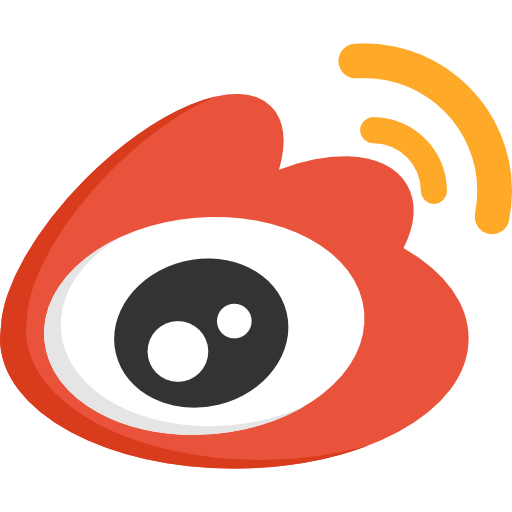
Weibo logo
According to the first quarter report released by Tencent in 2018, Weibo had 411 million monthly active users (MAU), making it the 7th social network in the world with MAU surpassing 400 million. The rest six social networks are Facebook, Messenger, WhatsApp, Instagram, WeChat, and QQ. Weibo is often labeled as the “Chinese Twitter”, but it is actually a far more promising platform in terms of digital marketing opportunities in China for foreign brands than its American counterpart. Considering its impressive user volume and abundant active influencers, Weibo can be an ideal website for foreign brands to launch KOL ads or purely to engage in conversations and interactions with customers.
What does advertising on Weibo look like?
There are several channels for foreign companies to advertise on Weibo:
- Paid Hashtag
- which appears on the sidebar next to timeline feed
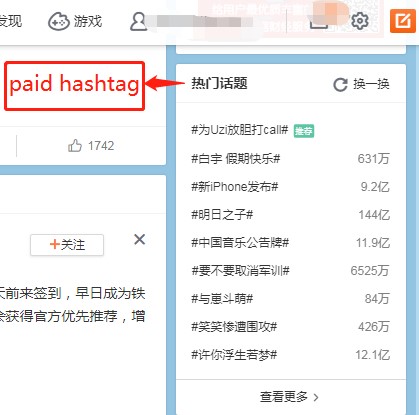
Weibo paid hashtag
- Fans Headline
- basically, it’s a paid post that appears on top of your followers’ timeline for a limited period of 24 hours
- users can pay to help other accounts’ posts appear on fans headline
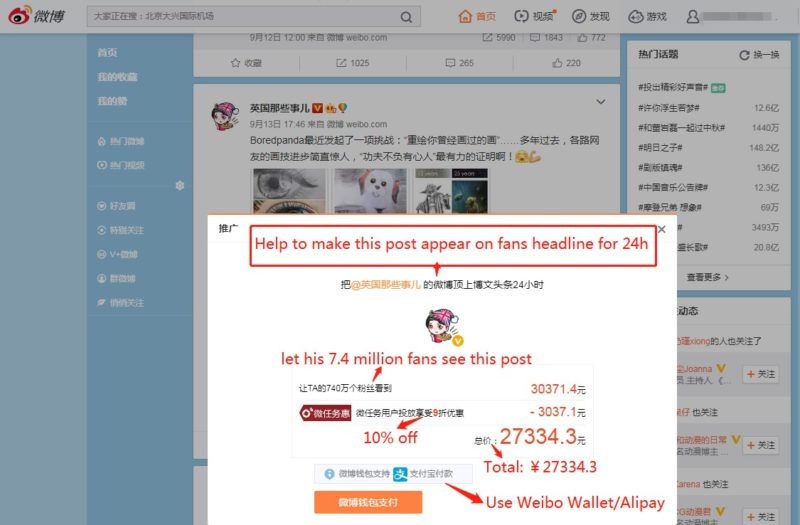
Weibo fans headline
- Fans Tunnel
- option 1: your chosen post will appear in other users’ timeline with a click button for them to follow
- option 2: you can choose to have your account name with a brief intro displayed on the sidebar next to the timeline
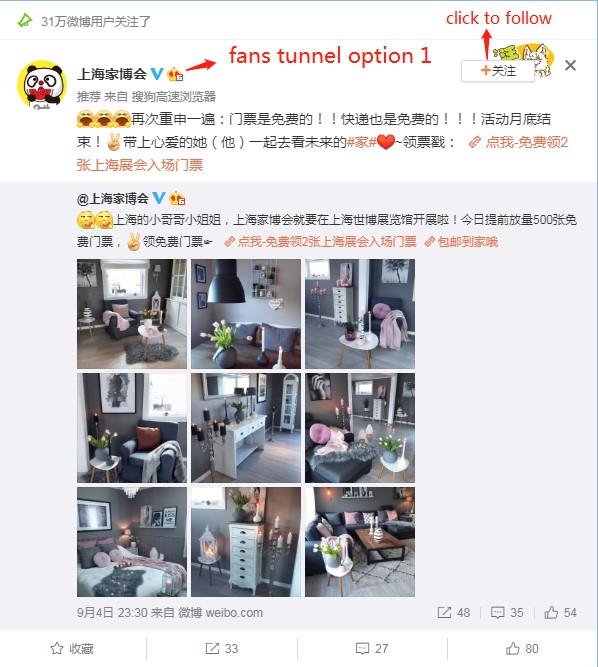 Weibo fans tunnel option 1 |
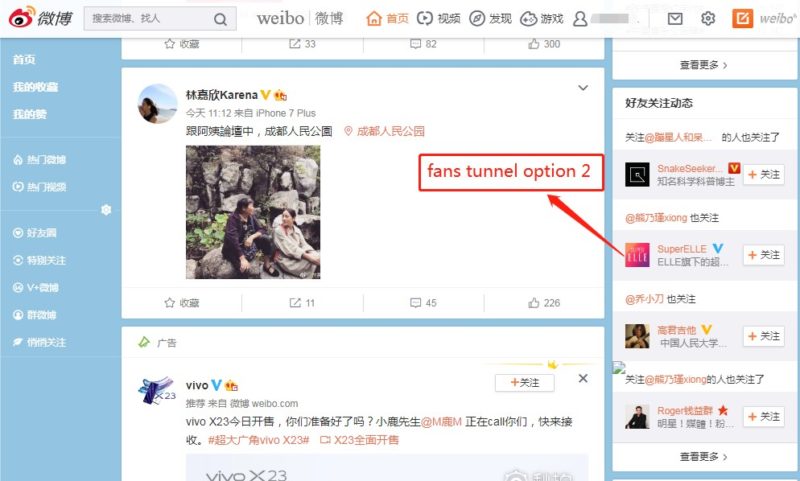 Weibo fans tunnel option 2 |
- Search Promotion
- k.a. 热搜/hot search trends, it’s shown on top of the timeline at all times
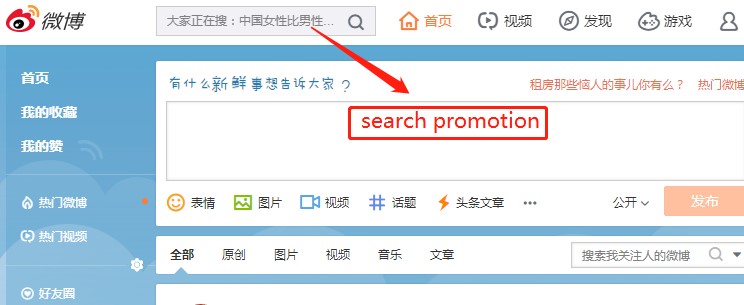
Weibo search promotion
- Banner Ads
- pretty much like the same ads we see all around on other social platforms like Facebook

Weibo banner ads
- Mobile App Screen Ads
- they show up every time when users open their Weibo mobile app
- the display format could be either a plain image, or a video with a link guiding users to a specific webpage
How can foreign companies advertise on Weibo?
Weibo has set up its own advertising website to introduce available marketing platforms and products.
Readers are encouraged to contact the Weibo team directly with regard to advertising entry:

Weibo ad initiative
How much does advertise on Weibo cost?
The cost of each advertising approach varies widely. For example, the pricing of fan headline depends on the number of followers of the advertiser. Fans tunnel, on the other hand, typically charges advertisers based on CPE (cost per engagement, which refers to interactions from target audiences, e.g., clicks/reposts/likes) and CPM. Here is a detailed look at the cost structure:
| Pricing | CPE | CPM |
| Minimum Entry Price | ¥0.5/$0.07 | ¥5/$0.73 |
| Minimum Price Raise Unit | ¥0.01/$0.0015 | ¥0.1/$0.015 |
2. The E-commerce Gorillas in China
Taobao, Tmall, and JD
Taobao, Tmall, and JD
 Taobao logo |
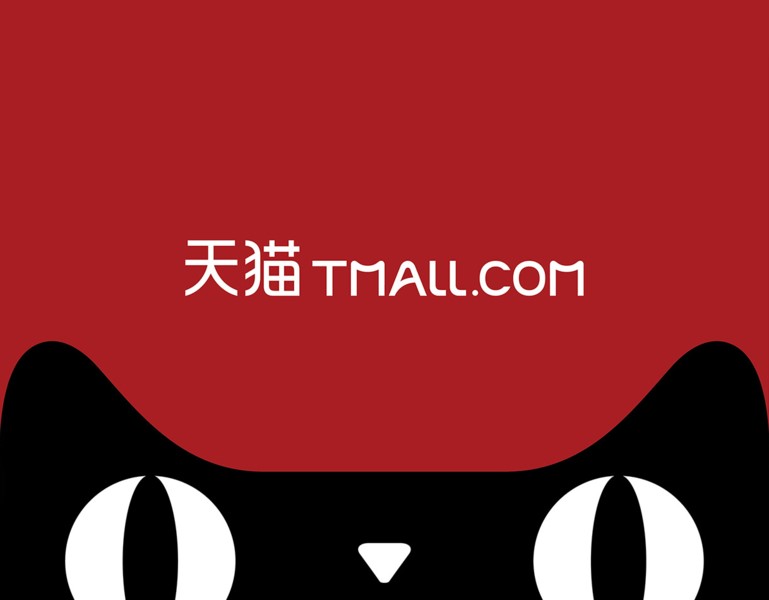 Tmall logo |
 JD log |
Taobao is often referred to as China’s eBay with over 8 million stores, specializing in C2C online retail, whereas its sibling – Tmall (a.k.a. Taobao Mall) has been focusing on improving B2C shopping experiences. Both platforms belong to the e-commerce conglomerate in China: Alibaba Group. Partially owned by Tencent, JD has been competing against Tmall, the largest B2C online retailer in China, for quite a few years. As of 2016, Tmall represented 57% of the entire B2C e-commerce in China while JD made up for 25% of it. The main differences between these two platforms lie in the management system. Business owners who are registered on Tmall are expected to take care of the entire supply chain, promotion and delivery of the product, and post-sale services themselves whereas users of JD only need to deliver products to the platform and let JD staff take care of the remaining procedures.
What does advertising on JD, Taobao and Tmall look like?
Since Alibaba wholly owns Taobao and Tmall, advertising on the two platforms has to go through their owner’s paid-search system, in which advertisers bid for their product visibility. For example, when a user searches specific words like “waterproof sports watch”, the first few product listing on the page will come from the company who paid the highest amount of CPC. Foreign enterprises can also choose to buy ad space on the homepage/sidebar of Tmall Global/JD Worldwide. Advertisers can put brand and product images along with discount information on them.
Here is a partial screenshot of the JD Worldwide homepage (apparently Walmart is one of the major advertisers on JD.com):
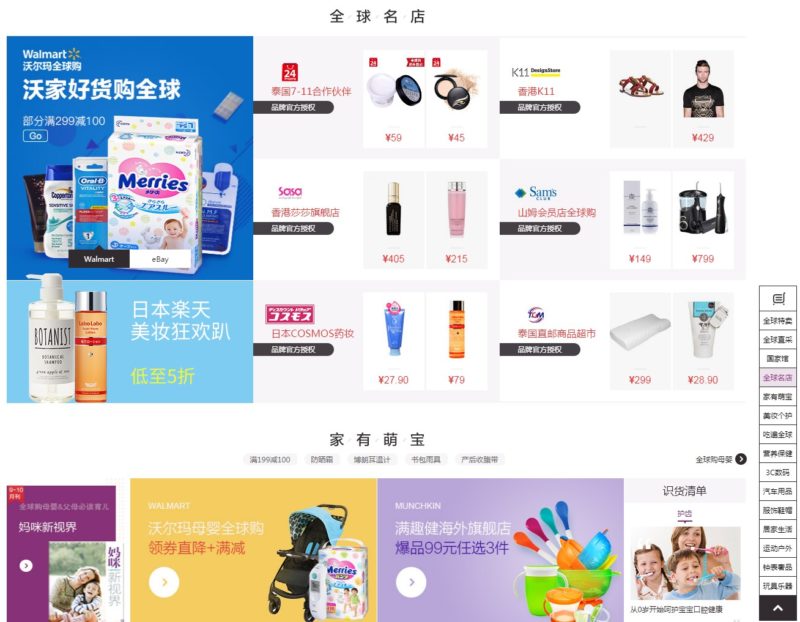
JD homepage
To give you another example, here is the homepage of Tmall Global:
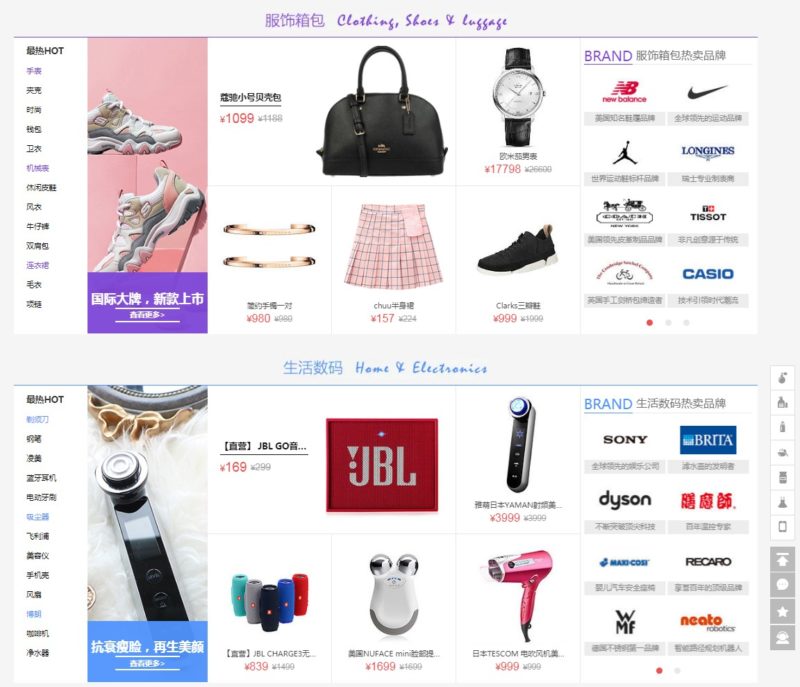
Tmall homepage
We can tell from the image that similarly to JD.com, Tmall has also divided its homepage into different sections based on product categories, and viewers can easily spot quite a few foreign brands in this ad, e.g., Sony, Dyson, Longines, Casio, etc.
This type of ads is charged upon CPM/CPC through the bidding system that can be accessed through Alibaba’s bidding website: where you can log in with your Taobao account.
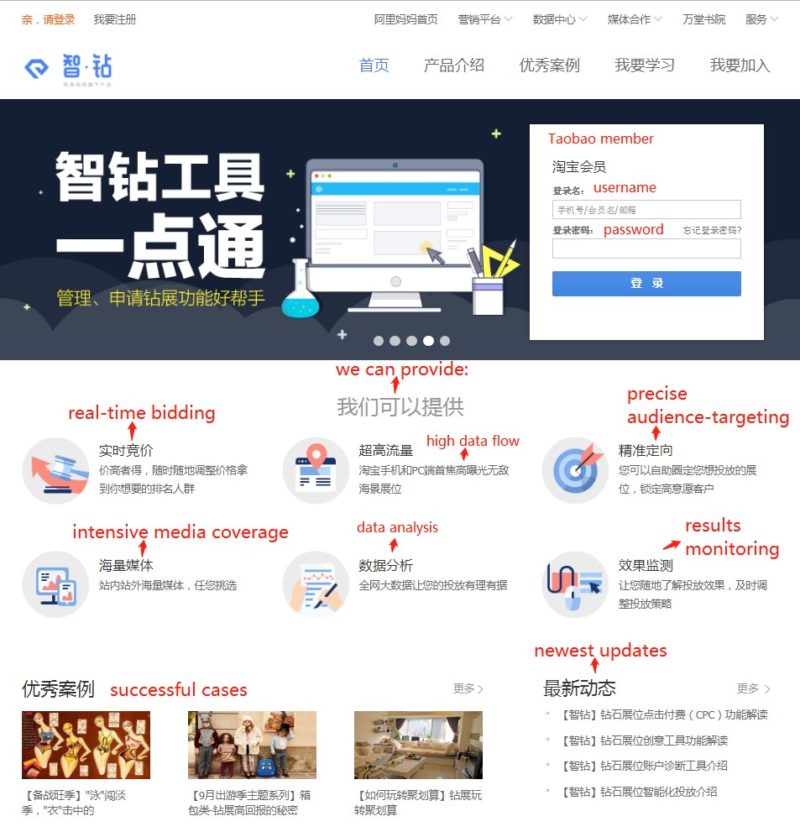
Tmall&Taobao ad initiative
The cost breakdown of running this type of ads on Taobao and Tmall:
| CPM | CPC | |
| Price | ¥10/$1.46 | ¥3/$0.44 |
Can overseas companies sell cross-border on Taobao, Tmall and JD?
For Tmall and JD, YES!
Both Tmall and JD.com have their own global platforms: Tmall Global (launched in 2013) and JD Worldwide (launched in 2015), which enable foreign enterprises to sell directly to Chinese consumers without a physical presence in China.
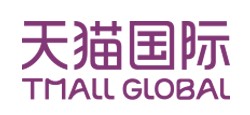 TmallGlobal logo |
 JD logo |
Here is the operation fee breakdown for foreign companies to launch stores on Tmall Global:
| Annual Fee | $5,000 |
| Security Deposit Fee | $25,000 |
| Alipay Transaction Service Fee | 1% |
| Commission Fee | 0.5% – 5% (depends on product category) |
Other entry criteria include:
- Over $10 million sales revenue for >2 years
- Possess retail and trade qualifications
- A brand owner or authorized agencies or possess the purchase voucher
- Possess the relevant stock certificates
In terms of receiving and processing applications from foreign companies, JD is very similar but somewhat more flexible compared to Tmall. On the cost side, JD Worldwide expects foreign applicants to provide:
- ¥10,000/$1,460 – ¥15,000/$2,190 for security deposit
- ¥1,000/$146 annual technical fee
- 3%-10% commission fee plus 0.85% JD shipping service fee
For your future reference, Tmall provides an exclusive page illustrating the entry channels, business model, consumer experience, merchant workflow, fee schedule, and store opening procedures on its own website.
For Taobao, unfortunately, NO
It is legally required to have a company registered in mainland China in order to open a store on Taobao.com. If you are a foreign business owner who’d like to sell on Taobao, you can register either limited liability or partnership companies to meet the legal requirements. Keep in mind that virtual company doesn’t work in this case – you will have to go through a series of company registration processes, including signing an office rental contract and acquiring a business license.
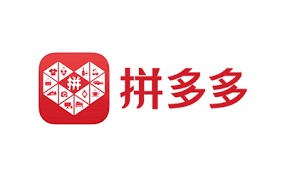
Pinduoduo logo
Why Pinduoduo? How is it different from Tmall, Taobao, and JD?
When discussing the leading social e-commerce players in China, it is inevitable to mention Pinduoduo – the dark horse with explosive growth rate. Launched in 2015, although this 3-year-old B2C platform has a debatable reputation of listing counterfeits and inferior quality products, it is undeniable that Pinduoduo’s group-shopping strategy and effective marketing mix together had made it become one of the most popular e-commerce apps in China. Compared to the heavyweights like Tmall, Taobao and JD, Pinduoduo is quite unique with the integration of social network into its online purchasing process. Mobile app users of Pinduoduo can share products information on social platforms like WeChat and QQ and invite their contacts to form a shopping group in order to get lower pricing. By March 31st, 2018, Pinduoduo had annual active users of 295 million with a quarterly increase of 50 million users from December 31st, 2017. As of June 2018, Pinduoduo’s monthly active users reached 195 million, which is approximately 31% of Alibaba’s.
Can foreign companies open stores on Pinduoduo?
YES!
Overseas business owners can set up stores on Pinduoduo on its website through the same application processes applied to local Chinese companies. Here is a screenshot of what the store entry page looks like:
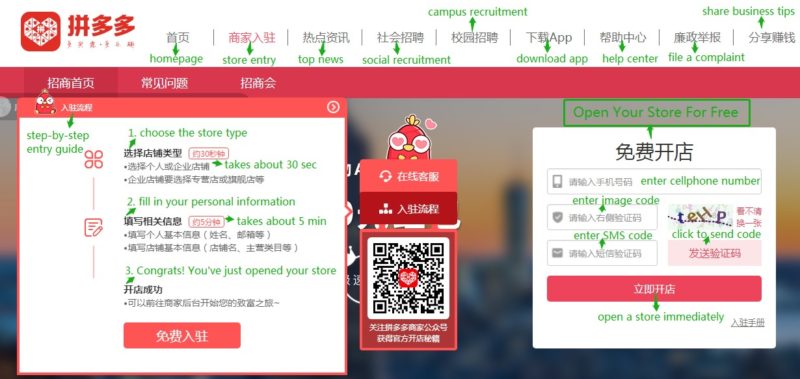
Pinduoduo store opening
For example, if you are a French cosmetic brand who wants to sell your own line of products on Pinduoduo, you will be advised to open a flagship store.
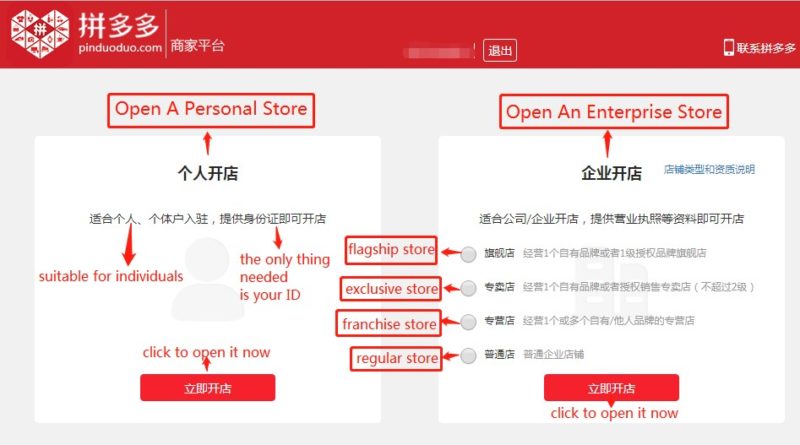
Pinduoduo store opening
Then it will direct you to the following page where you can input your personal information and then proceed to fill in your store information. A friendly reminder: make sure to have a Chinese cell phone number ready as Pinduoduo currently doesn’t accept overseas contact number.
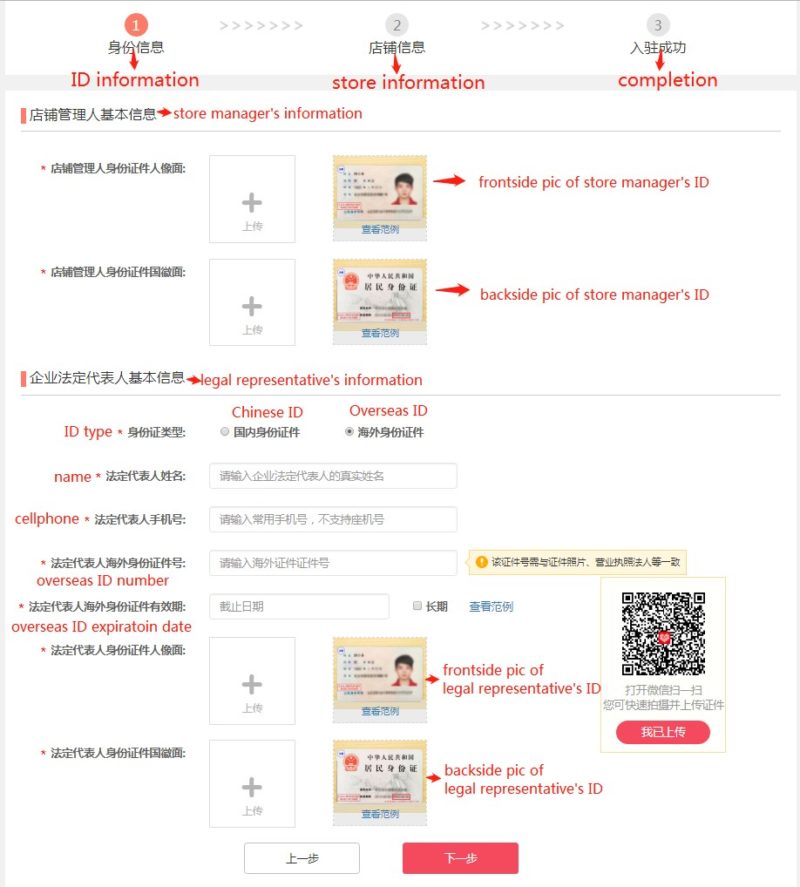
Pinduoduo store opening
What are the fees associated with selling on Pinduoduo?
Pinduoduo charges enterprises and small business owners a one-time security deposit fee based on product categories and store types.
|
Product Categories |
Security Deposit Fee Charged | |
| Overseas Enterprise Store | Overseas Personal Store | |
| Clothing, Bag & Suitcases | ¥1,000/$145.9 | ¥2,000/$291.8 |
| Outdoor Athletics | ¥1,000/$145.9 | ¥2,000/$291.8 |
| Fruits & Seafood | ¥10,000/$1459 | ¥10,000/$291.8 |
| Food & Health Supplements | ¥1,000$145.9 | ¥2,000/$291.8 |
| Skincare & Cosmetics | ¥1,000/$145.9 | ¥2,000/$291.8 |
| Nursing & Toys | ¥1,000/$145.9 | ¥2,000/$291.8 |
| Household Appliances | ¥1,000/$145.9 | ¥2,000/$291.8 |
| Virtuals | ¥10,000/$145.9 | ¥10,000/$291.8 |
| Electronic Gadgets | ¥1,000/$145.9 | ¥2,000/$291.8 |
| Textile & Furniture | ¥1,000/$145.9 | ¥2,000/$291.8 |
| Others | ¥1,000/$145.9 | ¥2,000/$291.8 |
Unlike its western counterparts Amazon and eBay, Pinduoduo does NOT charge commission fees, e.g., final value fee, closing fee, listing fee, monthly fee. The platform only collects 0.6% transaction fee from sellers on behalf of WeChat pay and Alipay in the occurrence of delivery confirmation and completion of refund.
Is Pinduoduo the right marketing platform for my company?
The answer really depends on a variety of factors, such as your budget plan, the nature of your business, the marketing goal you possess, and most importantly, what your target audiences are. Prior to official entry on Pinduoduo, business owners should be aware that compared with other mainstream e-commerce platforms in China, Pinduoduo’s user groups are largely made up by females in the age between 30 and 49 living in 3rd tier and smaller cities. Knowing this can help you become more prepared in defining the marketing strategy. For your reference, below are the demographics of consumers of Pinduoduo, Taobao, Tmall and JD.
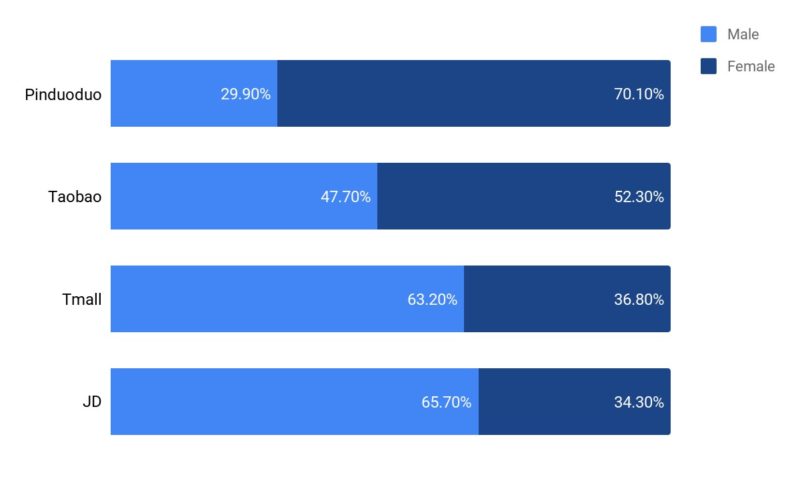


Author: Wenqing Zhao
Daxue Consulting helps you get the best of the Chinese market
Do not hesitate to reach out our project managers at dx@daxueconsulting.com to get all answers to your questions.


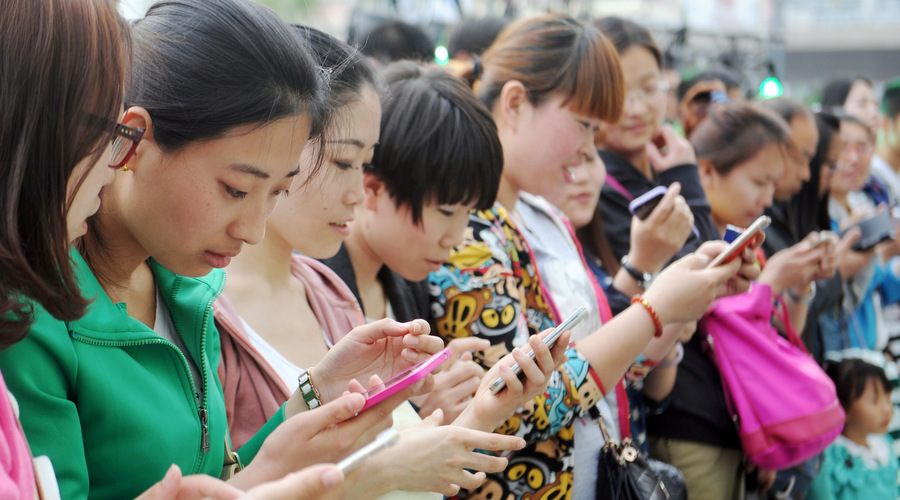
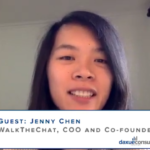
![[Podcast] China paradigm #19: How to leverage KOLs in China](../wp-content/uploads/2019/04/China-paradigm-19-China-marketing-podcast-150x150.jpg)




